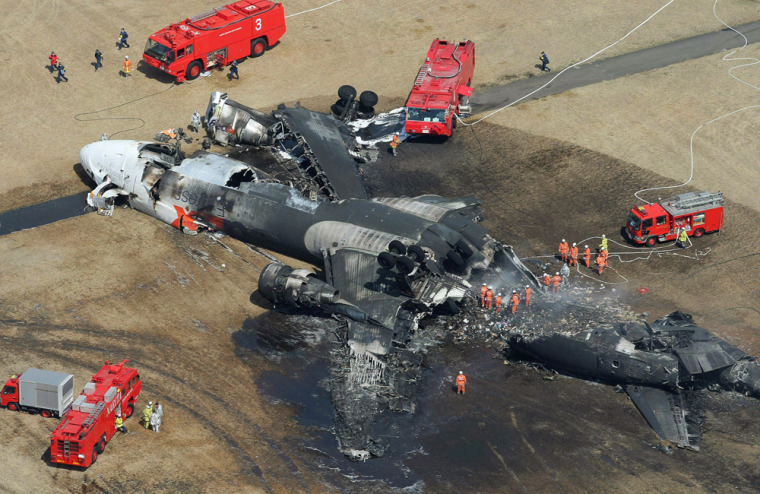Wind shear may have caused the crash of a FedEx jet that cartwheeled on the runway at Tokyo's main international airport and burst into a fireball, investigators said Monday, but experts noted that the model was notoriously difficult to land.
The American pilot and co-pilot — the only two people on board — were killed when the MD-11 cargo plane bounced on its landing at Tokyo's Narita international airport, slammed onto the runway and tipped onto its side before exploding into flames.
Kazuhito Tanakajima, an aviation safety official at the Transport Ministry, said the crash may have been the result of "wind shear," sudden changes in wind that can lift or smash an aircraft into the ground during landing.
But Tanakajima said the wind speed alone was not necessarily dangerous. He said there was headwind of about 45 miles per hour (72 kilometers per hour), and a crosswind of about 7 miles per hour.
Sudden changes in wind
Wind shear is a sudden change in the speed and direction of the wind, and happens relatively frequently. But a dangerous localized form — called a microburst — can cause planes to lose airspeed suddenly and or lift abruptly if a headwind suddenly changes to a tail wind during takeoff or landing, said Patrick Smith, a Boston based pilot and aviation analyst.
During the 1970s and 1980s, microbursts were blamed for a number of aviation disasters in the United States that helped usher in a new generation of wind shear detection technology.
Smith described a wind speed of 45 mph as unusually powerful.
"It is possible that shears from these gusts, together with known instability issues of the MD-11, led to the accident."
He said the aircraft is unusually sensitive on the controls but the downside is a tendency for pilots to over-control during a bounced or otherwise unstable landing, which in severe cases can lead to a total loss of control.
The MD-11 has had no fatal crashes since 1999 and was largely retired from passenger service because of the introduction of more economical planes.
Tomoki Kuwano, a former Japan Airlines pilot and aviation expert, said the MD-11 can be hard to land.
"In the past, the MD-11 has a record of landing failure," he said. "And when that happens it often flips over."
Other crashes involving MD-11s
In 1999, an MD-11 flipped over and burst into flames, killing three people during a crash landing in a storm in Hong Kong. And in 1997 one of the planes landed hard, flipped and caught fire while landing in Newark, N.J.
Monday's was the first deadly crash at Narita — the main air hub for international flights to Tokyo — since the airport opened in 1978. According to the U.S. Federal Aviation Administration, pilot Kevin Kyle Mosley, 54, of Hillsboro, Ore., and co-pilot Anthony Stephen Pino, 49, of San Antonio, Texas — were killed as they landed the flight from Guangzhou, China.
FedEx, which just last month opened its Asian hub in Guangzhou, said it was investigating the cause of the accident.
"We will continue to work closely with the applicable authorities as we seek to determine the cause for this tragic incident," the company said in a statement.
More on Japan
